I'm using the code posted in the answer here to pan a large image using mousedown, positioned in a div underneath another image with transparency. There is no need for zooming. The code works fine for me, except that the pan begins from the top left corner of the large image, and I want it to begin from the centre point, and then pan in all directions. I don't know enough about the calculations involved to do it, so would really appreciate some pointers on how to work it out, or alternatively what I need to do to specify a starting point.
The jQuery is:
var clicking = false;
var previousX;
var previousY;
$("#scroll").mousedown(function(e) {
e.preventDefault();
previousX = e.clientX;
previousY = e.clientY;
clicking = true;
});
$(document).mouseup(function() {
clicking = false;
});
$("#scroll").mousemove(function(e) {
if (clicking) {
e.preventDefault();
var directionX = (previousX - e.clientX) > 0 ? 1 : -1;
var directionY = (previousY - e.clientY) > 0 ? 1 : -1;
$("#scroll").scrollLeft($("#scroll").scrollLeft() + (previousX - e.clientX));
$("#scroll").scrollTop($("#scroll").scrollTop() + (previousY - e.clientY));
previousX = e.clientX;
previousY = e.clientY;
}
});
$("#scroll").mouseleave(function(e) {
clicking = false;
});
The html is:
<div id="scroll">
<img src="sampleimg.jpg" class="background" />
</div>
<img src="sampleoverlay.png" class="overlay" />
The css is:
#scroll {
width: 580px;
height: 620px;
overflow: hidden;
}
.background {
width: 100%;
height: 100%;
}
.overlay {
width: 100%;
height: 100%;
position: absolute;
pointer-events: none;
}
Apologies if this is really obvious - I couldn't find anything that would answer my question, but may not have been searching for the right thing.
